Formula: CH3CHOHCOOH Molecular weight: 90.08 Performance:It is colorless transparent viscidity liquid, mild acid, guide wetly; the aqueous solution shows the acid reaction. It can be mixed with water, ethanol or ether wantonly, but not dissolved in chloroform. Specification:80%, 88% Packing:25kg drums, 250kg drums, IBC plastic drums. Main use: This product has characteristics, such as hot stability natural purely with soft and certain tart flavor,etc. Widely used in the food,pharmaceutical,electroless plating industries,etc.
Lactic Acid,98% Lactic Acid,Lactic Acid 85%,Lactic Acid Of Purity 80% Shandong Tiancheng Chemical Co., Ltd. , https://www.akdchemical.nl
4. The main calculation of polymer precise microporous filtration technology
After more than forty years of research and development, the hardware and software of polymer precision micropore filtration technology are becoming more and more mature. In most industrial production promotion applications, most of them do not need to be pilot scale amplification test. As long as the strict system test and rigorous calculations are carried out, the engineering enlargement design can be directly carried out.
After 40 years of research and development, the hardware and software of polymer precise microporous filter technology become beneficial maturity. Most of the popularization and application of industrial production, the majority do not need to make the pilot-scale test. As long as do some Strict small system experiments and rigorous calculation, we can directly carry out the design of productive scale.
4.1 Calculation of the average capillary pore diameter dm of the sintered microporous filter medium required:
4.1 The calculation of average capillary pore diameter dm of sintered microporous filter medium required
The filtration mechanism of the rigid sintered microporous filter tube is more complicated than that of the flexible microporous membrane. The flexible microporous membrane mainly relies on mechanical sieve filtration on the surface of the membrane. The thickness of the membrane is very thin, and the effect of the deep layer is negligible. Because of the certain wall thickness of the rigid sintered microporous tube, the deep layer of the capillary channel can also play an obvious filtering role. The macroporous pore microporous medium can filter particles smaller than the capillary pore diameter by the adsorption of the pore wall and the mechanism of the particle bridge and the obstacle blocking of the curved capillary channel. The mechanical sieve on the surface of the microporous tube is only Play a secondary role.
The filtration mechanism of rigid sintered microporous filter tube is more complex than the flexible microporous membranes. Flexible microporous membrane mainly relies on the mechanical sieving of the surface. The thickness of membrane is thin, and the role of deepness is negligible. Tube having certain wall thickness, and the deepness of pores can also have apparent filtering effect. Utilizing the adsorption of pore-wall, particle bridging mechanism, as well as the obstructive resistance of bending pores, microporous filter medium of large pore diameter can filter the Particle whose diameter is less than the pores, and the mechanical sieving of the surface of microporous tube only plays a secondary role.
For particles smaller than 10 μm, the average capillary pore diameter dm of the filter medium required and the small particle size ds of the filtered particles, the average porosity ε of the microporous filter medium, the wall thickness ΔL, the filtrate viscosity μ, and the average filtration rate There are the following relations between u:
For the particles smaller than 10 microns, the required average pore diameter dm, of the filter medium, the smallest particle size ds of the particles filtered, the average porosity ε of the micropore filter medium, the thickness △L, the filtrate viscosity μ and The average filtration rate u conform to the following formula: 
4.2 Main calculation of liquid precise cake filtration
4.2.1 The relationship between the average specific resistance α of the filter cake and the filtration pressure difference ΔP in the filtration of liquid precision filter cake:
4.2.1 The relationship between average resistance α of cake and filtration pressure drop △P in the liquid precise cake filtration:
For all filter cake filtration, the average specific resistance α at different pressure differences ΔP must be determined, and then the mathematical relationship between α and ΔP is summarized. Two mathematical models are available, namely: For all the cake filtration , the average resistance α must be measured under different pressure drop ΔP. The relationship between α and △P should be summed up, and there are two available mathematical models, as following: 
Formula (1) and formula (2) formula(1)&formula(2)
Formula 1 is commonly used for calculation at home and abroad. After practising for long, the author finds that for the cake which is consist of of micron and sub-micron level particles about 10 microns below, especially 5 microns below, Formula 2 is more The correct squeezing effect of cake from the filtration pressure drop and the forward displacement of fine particles with the filtrate Flowing, it makes that the forward and backward pore structure of the whole cake layer is asymmetric. The capillary force will lead to a greater resistance of filtrate flowing , so Formula 2 is closer to the experimental data.
In the various books and articles at home and abroad, there are very few formulas (2), and experimental data in this area is rare.
Formula 2 appeared in a variety of filtration books and articles at home and abroad, and the experimental data about it was hard to be seen.
In the practice of several decades, the author determined the experimental data between the average specific resistance α and ΔP of a large number of fine particle filter cakes, and calculated the α0, λ and s coefficients of each material. Table 6 gives the parts. The relationship between α and ΔP of the fine particle filter cake.
After practice of several decades, the author has determined the experimental data between the average cake specific resistance α and ΔP for a large number of fine particles, and has calculated α0, λ, s and other coefficients for each material. Table 6 gives the Relationship of α and △P of some viscous-fine cakes.
The data in Table 6 has limitations. First, the pressure difference range is not large, generally only between 0.05 and 0.3 MPa, and the pressure difference interval is not expanded to 0.4 MPa or more. Second, the measured materials are produced by some enterprises. Directly obtained on site, not necessarily a very pure material. If the pressure range is different, the material concentration is different from the material properties, and the relationship between α and ΔP will also change. Therefore, Table 6 is for reference only and may not be used unconditionally.
The data of Table 6 has limitations. First, the scope of pressure is not large, generally between 0.05 MPa and 0.3 MPa, and it does not extend to the pressure range of more than 0.4Mpa. Second, the materials measured are obtained directly from The production scene of certain enterprise, which are not specific pure materials. If the pressure ranges, the material concentration and the material characters are different, the relationship of α and △P will change. So Table 6 is only for reference purpose, and it Is not quite appropriate for the unconditional use. 

Table 6 The relationship between the average filtration resistance α of certain materials and pressure ΔP 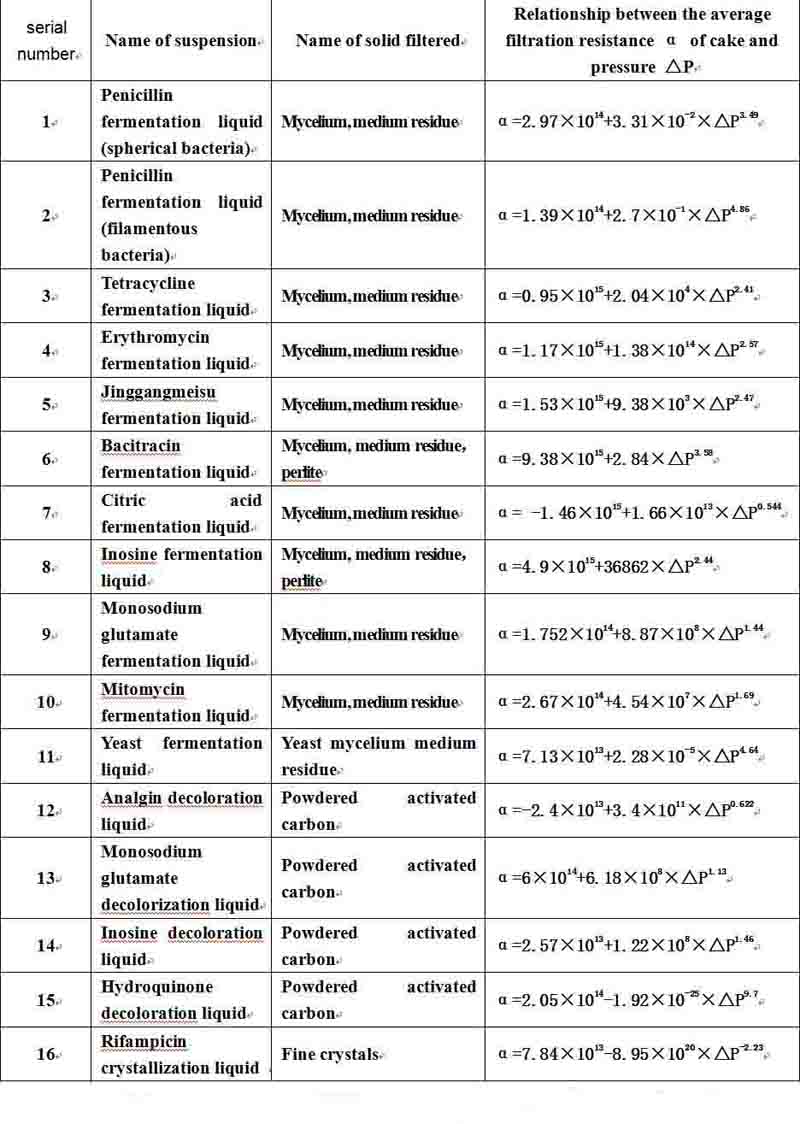
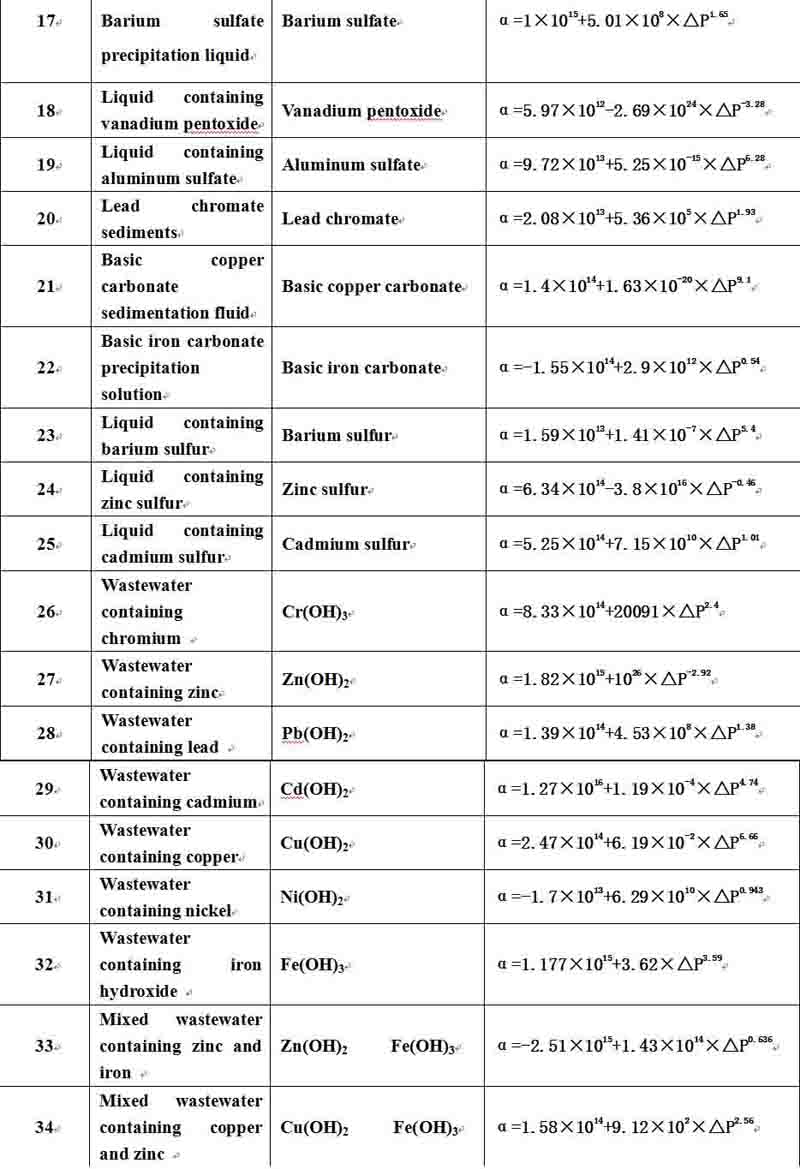

4.2.2 The best filtration pressure drop â–³P:
For most materials containing fine particles, there is a good filter pressure difference ΔP which can reach the large production capacity of Zui, and the pressure difference can be calculated as follows:
For the vast majority of suspensions which contain fine particles, there can be the best filtration pressure drop ΔP at maximum production capacity. The pressure drop can be determined by using the following equations: 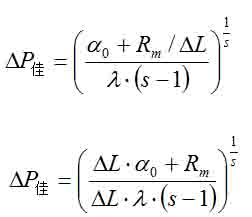
The material composed of micron and submicron particles has a smaller capillary diameter of the filter medium filtered by the filter cake, so the resistance Rm of the filter medium is larger; and the average specific resistance of the formed filter cake is larger due to the fine particles. The filter cake thickness ΔL is unlikely to be large; therefore, the term Rm/ΔL is often negligible compared with α, otherwise it will affect the correctness of the calculation.
For the suspension consisted of micron and submicron particles, the filter media pore diameter of the cake filtration is relatively little, so the resistance Rm of filter media is large. Because of fine particles, the average resistance of the cake formed is larger, and the Filter cake thickness △L can not be large., the Rm/ △L can not be ignored, when compared with α, otherwise, it will affect the accuracy of the calculation.
It can be seen from the formula (3) or (3') that ΔP is preferably changed with ΔL, and in order to truly obtain the large production capacity of zui, the operating pressure difference should be continuously adjusted by increasing ΔL.
By equation (8) or (8`), we can see that ΔP will change with △L. In order to achieve the greatest production capacity, the operation pressure drop should be constantly adjusted with the increase of △L.
4.2.3 Calculation of the required filtration area F:
4.2.3 The calculation of filter areas F required:
Can be as follows:
According to the formula: 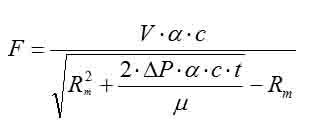
4.2.4 Calculation of the average thickness of the filter cake layer ΔL:
4.2.4 The calculation of the average thickness â–³L of cake layer:

4.3 The main calculation of liquid precise clarification filtration:
Liquid precision clarification filtration refers to filtration in which substantially no filter cake is formed on the surface of the filter medium or only a very thin filter cake is formed. This type of filtration is either depth filtration or surface filtration. The filter cake specific resistance cannot be determined, and it cannot be calculated by the filter cake filtration method.
Liquid precise clarification filtration is the filtration which will not form cake at the surface of the filter media basicly, or just form very thin cake. The filtration belongs to deep filtration or surface layer filtration. Not only it can not measure the cake specific resistance, But also it should not use cake filtration method.
For the rigid sintered microporous filter tube with a certain wall thickness, in the filtration operation, in order to make the backflush regeneration efficiency of the gas-water mixed flow high, it should be controlled so that the blockage basically occurs in the surface layer, instead of basically occurring in the deep layer. Surface filtration, filter media has a long service life, and chemical regeneration is used less frequently.
For the rigid sintered porous filter tube with a certain thickness, in the filter operation, in order to enable high efficient regeneration with the gas-water mixture backblowing, it should be controlled that the clogging happens at the surface layer basicly, rather than at the deep For the surface layer filtration, the filter medium will have long service life, and chemical regeneration will not be frequently used.
For the surface layer filtration, the average filtration rate W and the filtration time t in each cycle are in accordance with the following relationship: For the surface layer filtration, the average filtration rate W per cycle and the filtration time t conform to the following relationship: 
(Author: Shanghai Dongpu Microfiltration Technology Institute) 
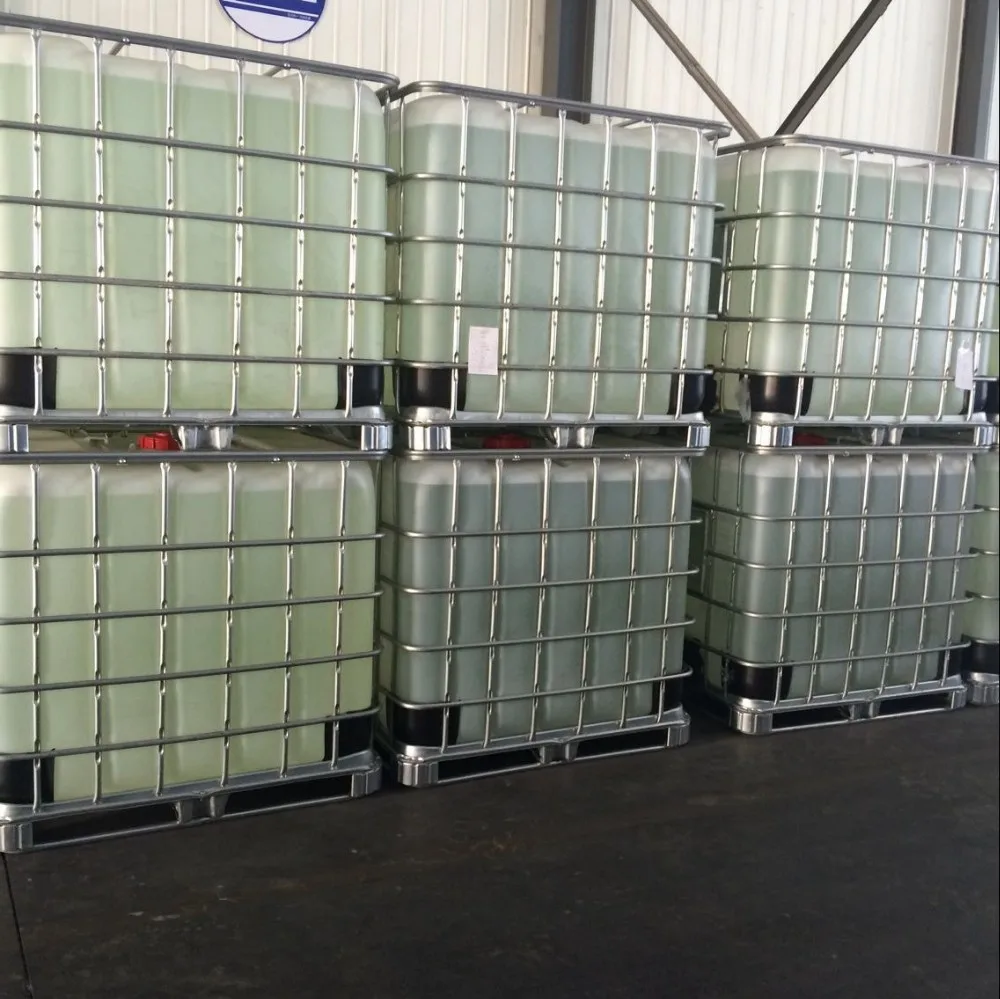
Main calculation of polymer precision micropore filtration technology
4. Main calculation of polymer precision micropore filtration technology
Formula
4.2 Main calculation of liquid precision filter cake filtration
Formula (1) calculation is widely used at home and abroad. After long-term practice, the authors found that the formula (2) is correcter than the formula (1) for the filter cake composed of micron and submicron particles below 10 microns, especially below 5 microns. This may be due to the fact that the solid particles are very fine, the capillary pore size of the filter cake layer is small, and the capillary force is large. The extrusion of the filter cake by the filtration pressure difference and the flow of the filtrate in the capillary pores cause the fine particles to move forward. The asymmetry of the front and rear capillary pores of the entire filter cake layer. Since the capillary force will produce a large filtrate flow resistance for these two reasons, the formula (2) is closer to the experimental data.
Table 6 shows the relationship between the average specific resistance α of some materials and the filtration pressure difference ΔP
4.2.2zui good filtration pressure difference â–³ P good:
Equations 3 and 3' formula3&3'
Formula formula
Formula formula
4.3 Main calculations of liquid precision clarification filtration:
Formula formula